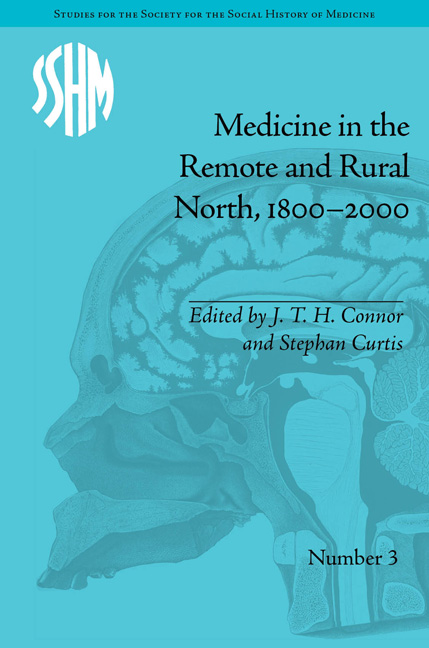Book contents
- Frontmatter
- CONTENTS
- Acknowledgements
- List of Contributors
- List of Figures and Tables
- Introduction: Cores/Peripheries – Rural/Remote: Medicine, Health-Care Delivery and the North
- Part I Remote Medicine and the State
- Part II Doctors and Doctoring in Remote Areas
- Part III Women, Health Care and the Practice of Medicine
- 9 The West Greenlandic Midwives 1820–1920: Mediators between their Compatriots and Danish Doctors
- 10 Delivering Health Care in Rural New Brunswick: Outpost Nursing in the Twentieth Century
- 11 Mother's Medicine: Women, Home and Health in the Peace River Region of British Columbia, Canada, 1920–40
- 12 Call of the Wild: Public Health Nursing in Post-War Lapland
- Notes
- Index
10 - Delivering Health Care in Rural New Brunswick: Outpost Nursing in the Twentieth Century
from Part III - Women, Health Care and the Practice of Medicine
- Frontmatter
- CONTENTS
- Acknowledgements
- List of Contributors
- List of Figures and Tables
- Introduction: Cores/Peripheries – Rural/Remote: Medicine, Health-Care Delivery and the North
- Part I Remote Medicine and the State
- Part II Doctors and Doctoring in Remote Areas
- Part III Women, Health Care and the Practice of Medicine
- 9 The West Greenlandic Midwives 1820–1920: Mediators between their Compatriots and Danish Doctors
- 10 Delivering Health Care in Rural New Brunswick: Outpost Nursing in the Twentieth Century
- 11 Mother's Medicine: Women, Home and Health in the Peace River Region of British Columbia, Canada, 1920–40
- 12 Call of the Wild: Public Health Nursing in Post-War Lapland
- Notes
- Index
Summary
Remote and rural health-care issues have been a part of Canada's health-care challenge throughout its history. A number of voluntary groups, including the National Council of Women of Canada (NCWC), developed schemes and programmes from the late nineteenth century onwards to deal with the scarcity of health care on the prairies, in the north and in rural parts of the more settled provinces. Women's groups like the NCWC understood the great need for assistance to women who lacked access to midwives, nurses and doctors during childbirth and thus supported the creation of groups such as the Victorian Order of Nurses (VON). Similarly, in Newfoundland (which would become part of Canada in 1949), Lady Harris, wife of the Governor, brought trained midwives to the island in 1921 to serve outport and rural women and their families. The Grenfell Mission in northern Newfoundland and coastal Labrador also provided health-care services to fishermen and their families; through its office in London, England, the Mission sought nurses trained in midwifery to assist women in childbirth. Such voluntary efforts provided key assistance at a time when publicly supported health care was non-existent or minimal. Of particular note is the role played by women as nurses and midwives in sustaining rural health care through both paid and volunteer labour.
As other articles in this collection underline, women's participation in health care was central in northern, rural and remote areas generally.
- Type
- Chapter
- Information
- Medicine in the Remote and Rural North, 1800–2000 , pp. 183 - 198Publisher: Pickering & ChattoFirst published in: 2014



